Tillandsia capistranoensis
Click thumbnails for full size, scaled to a new window.
Tillandsia capistranoensis
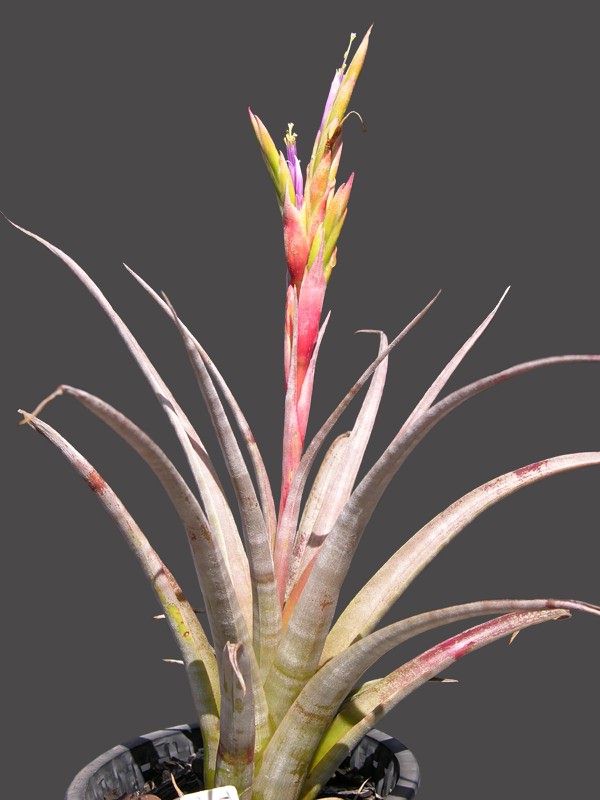
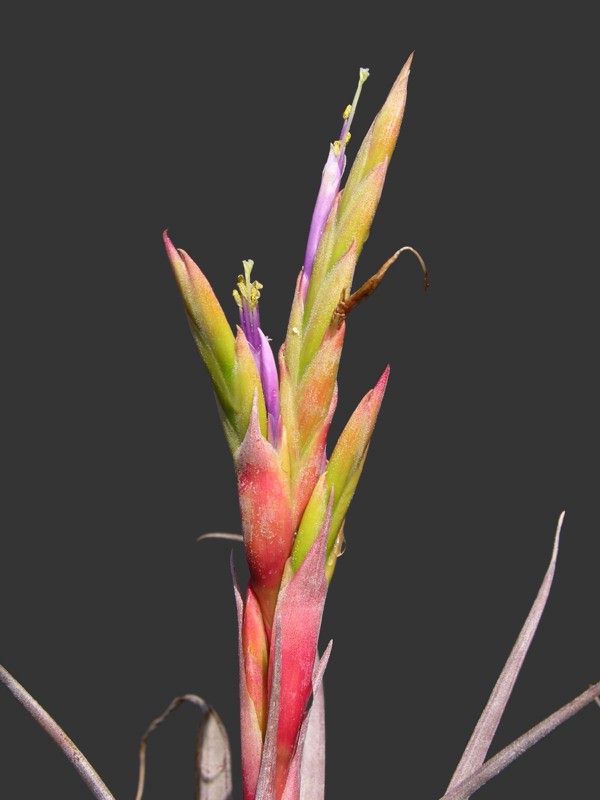
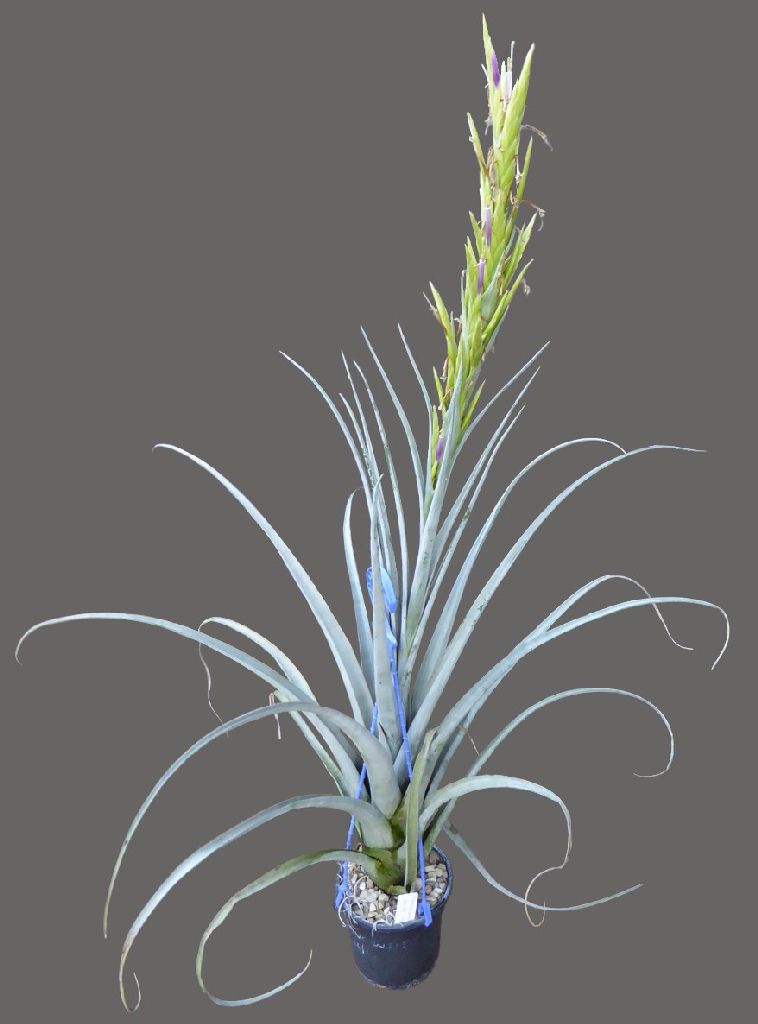
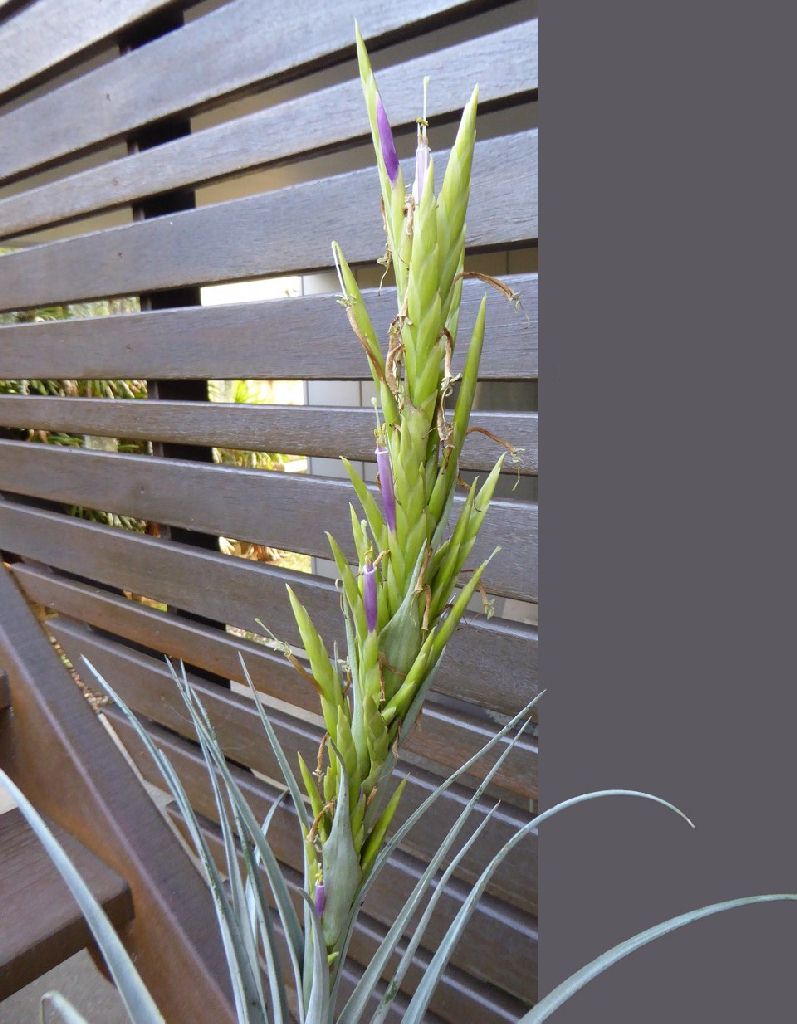
| Len Colgan 01/14 |
Bruce Dunstan 11/18 |
Bruce Dunstan ... "The plant grows at the type locality epilithically on low rocks in large groups together with a green mammilaria with long brown or black thorns. On nearby bushes there is a very large form of T. atroviridipetala with small appressed scales."
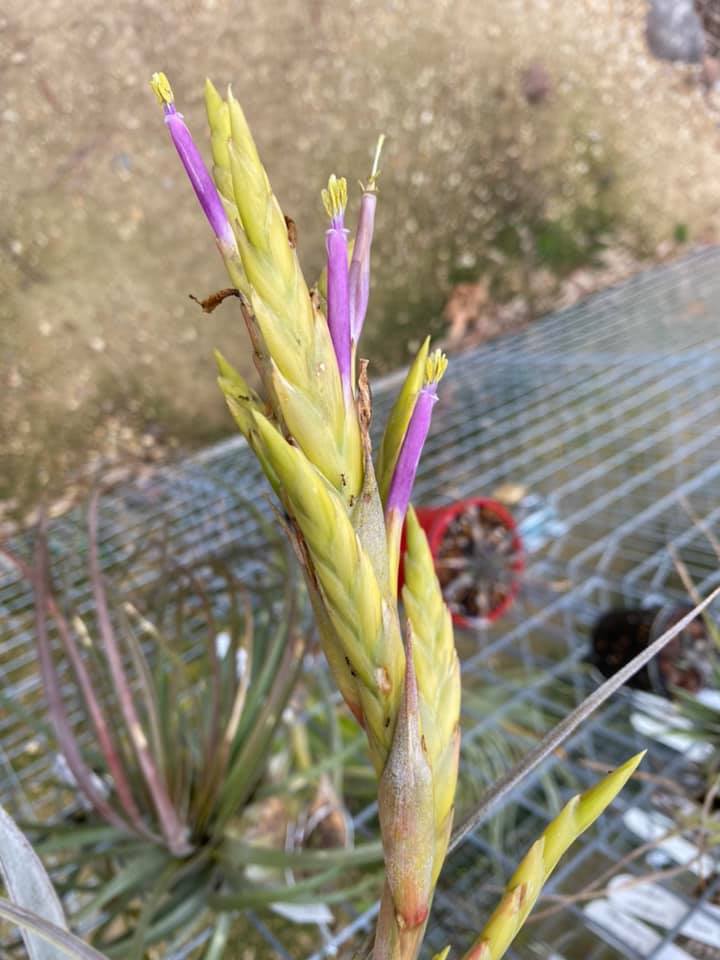
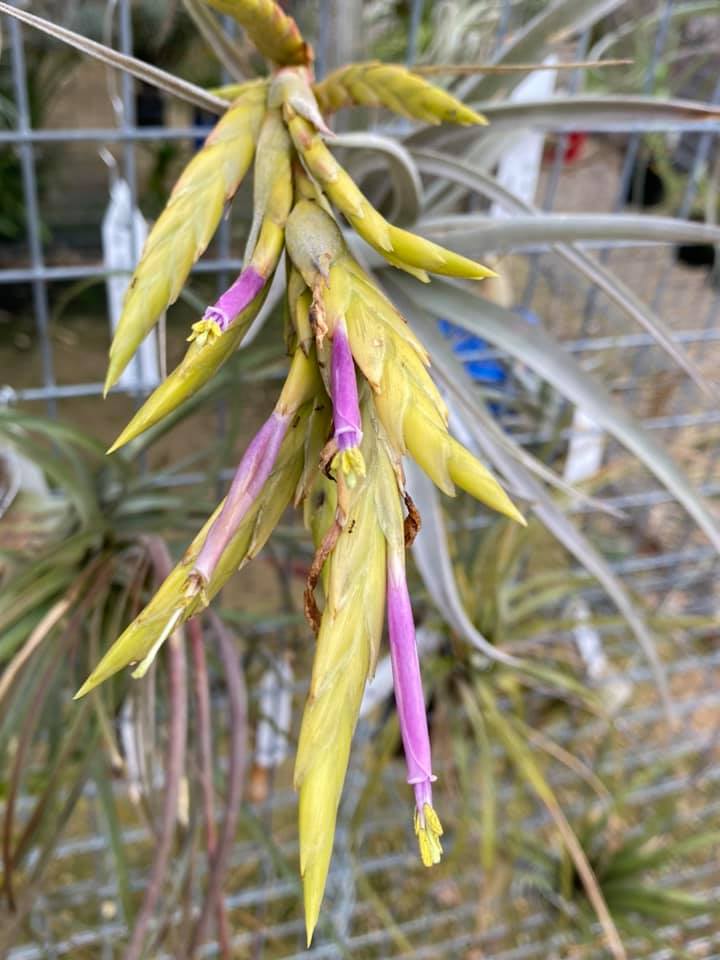
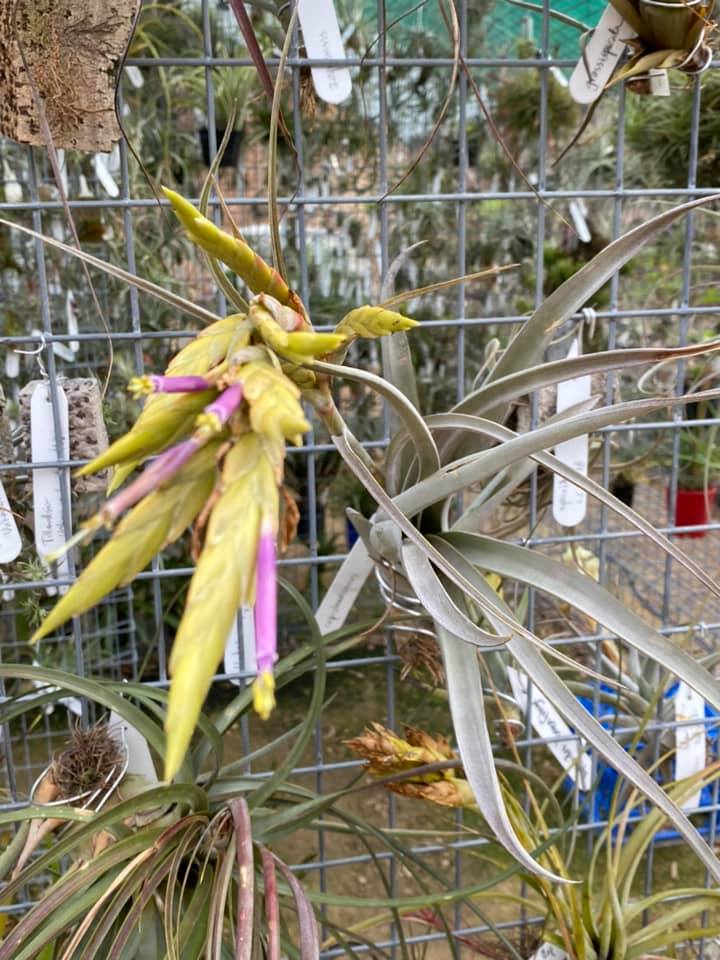 Dale Dixon ... "T. capistranoensis (subg. Tillandsia) is a lithophytic species from Mexico. The type specimen was collected on the road between San Juan Capistrano and Jesus Maria in the State of Zacatecas at 2000 m elevation.
Dale Dixon ... "T. capistranoensis (subg. Tillandsia) is a lithophytic species from Mexico. The type specimen was collected on the road between San Juan Capistrano and Jesus Maria in the State of Zacatecas at 2000 m elevation.
The specific epithets is in reference to its location. Whenever you see the suffix -ensis it means from that place ie from San Juan Capistrano.
My plant is suspended on wire and hangs in full sun on the outside of the Tillandsia House."
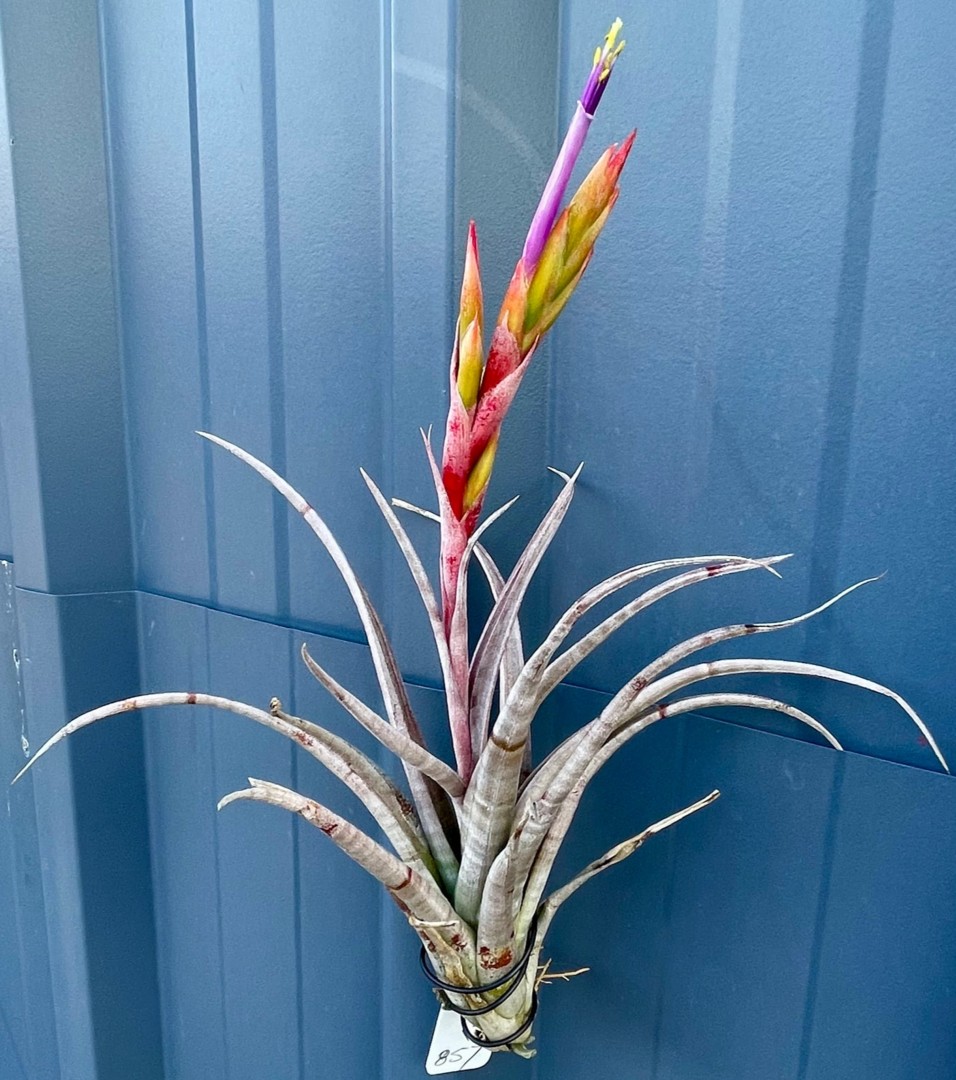
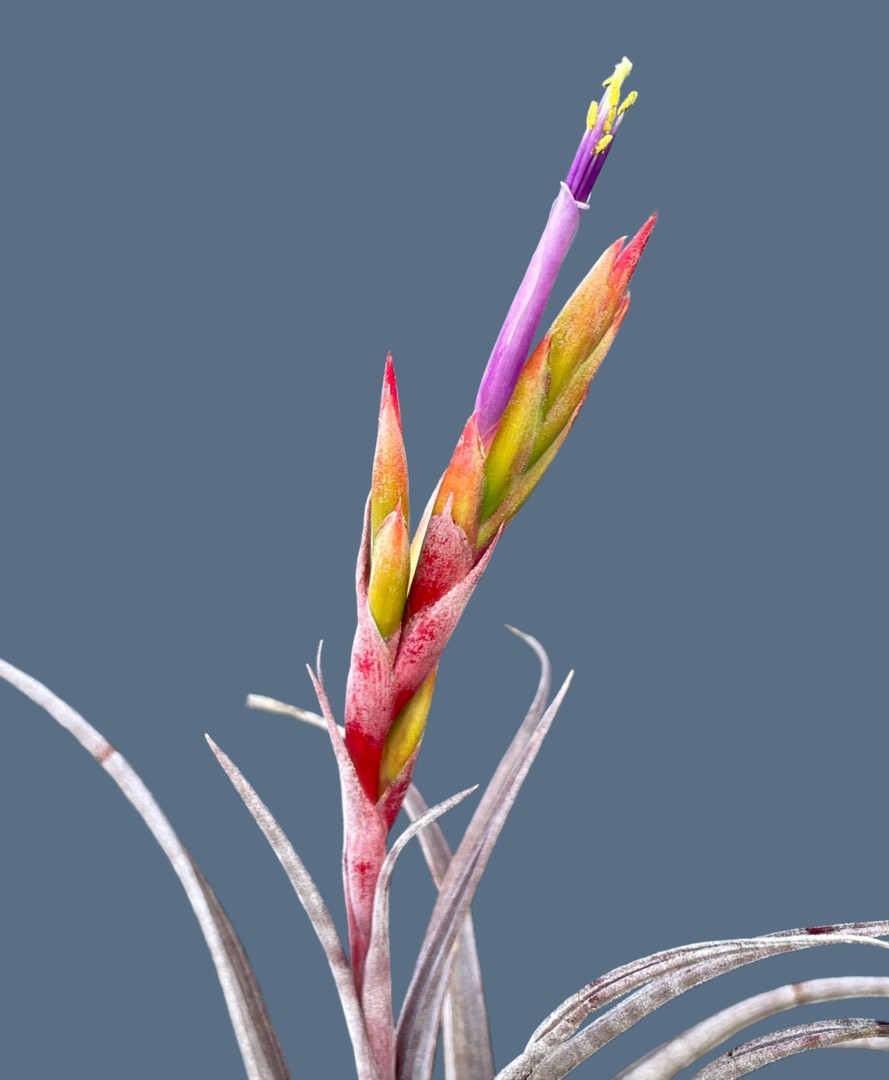
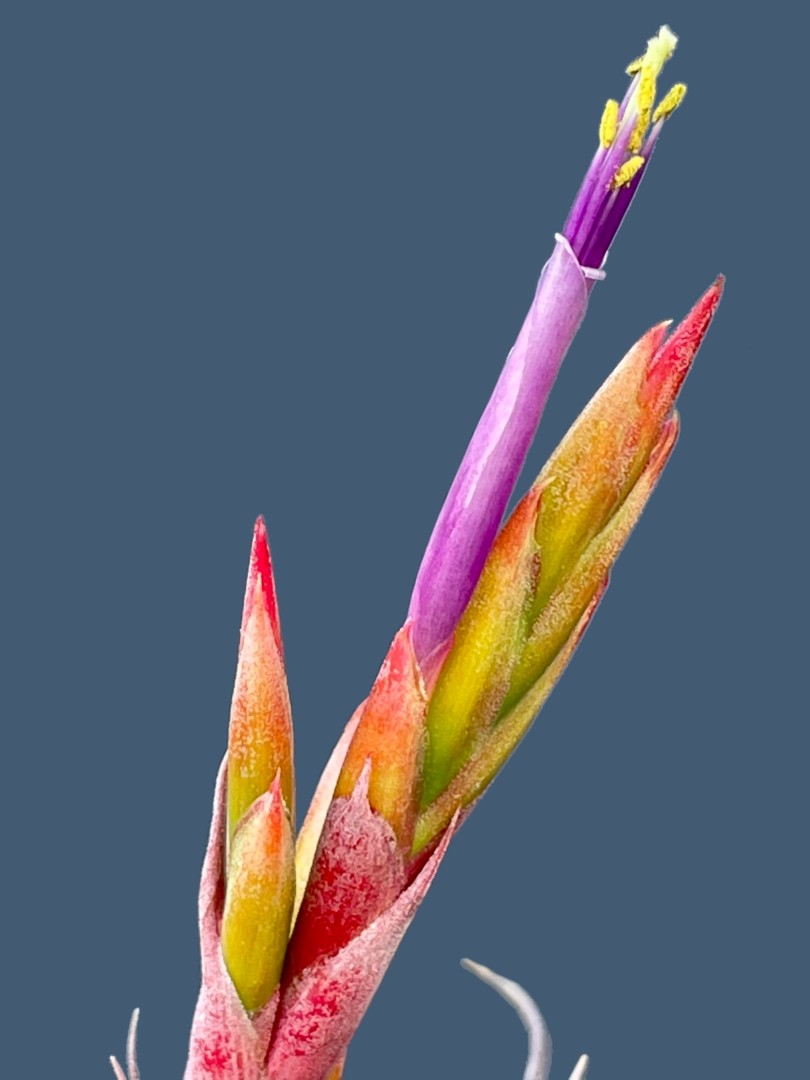
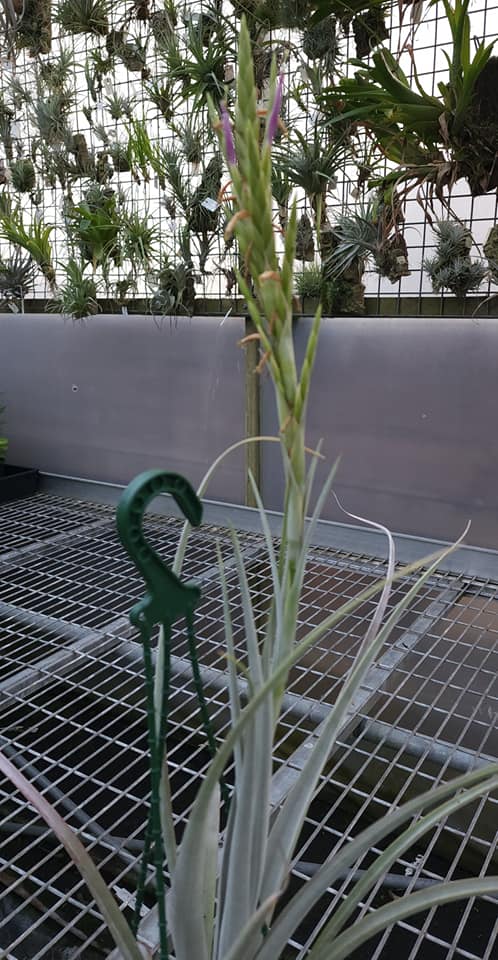
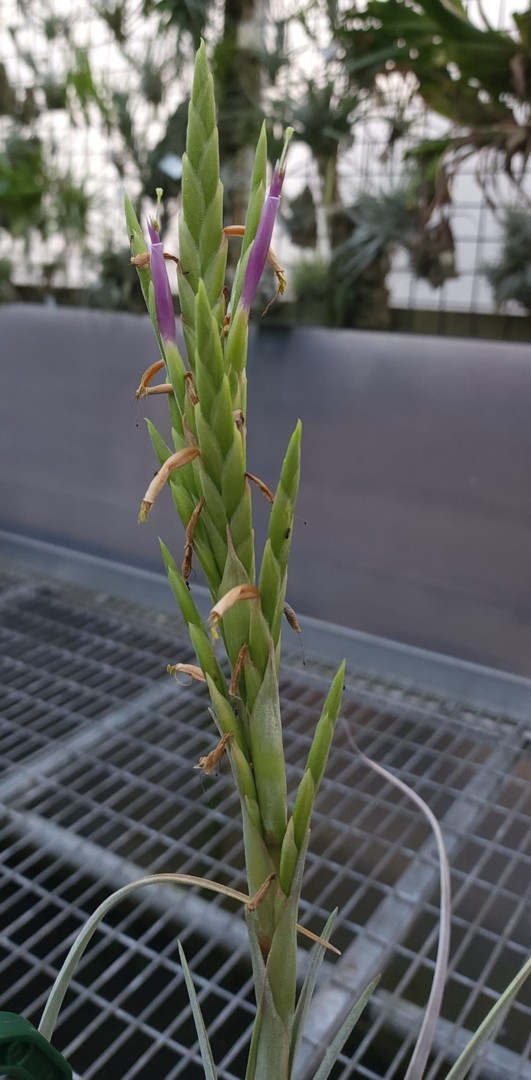
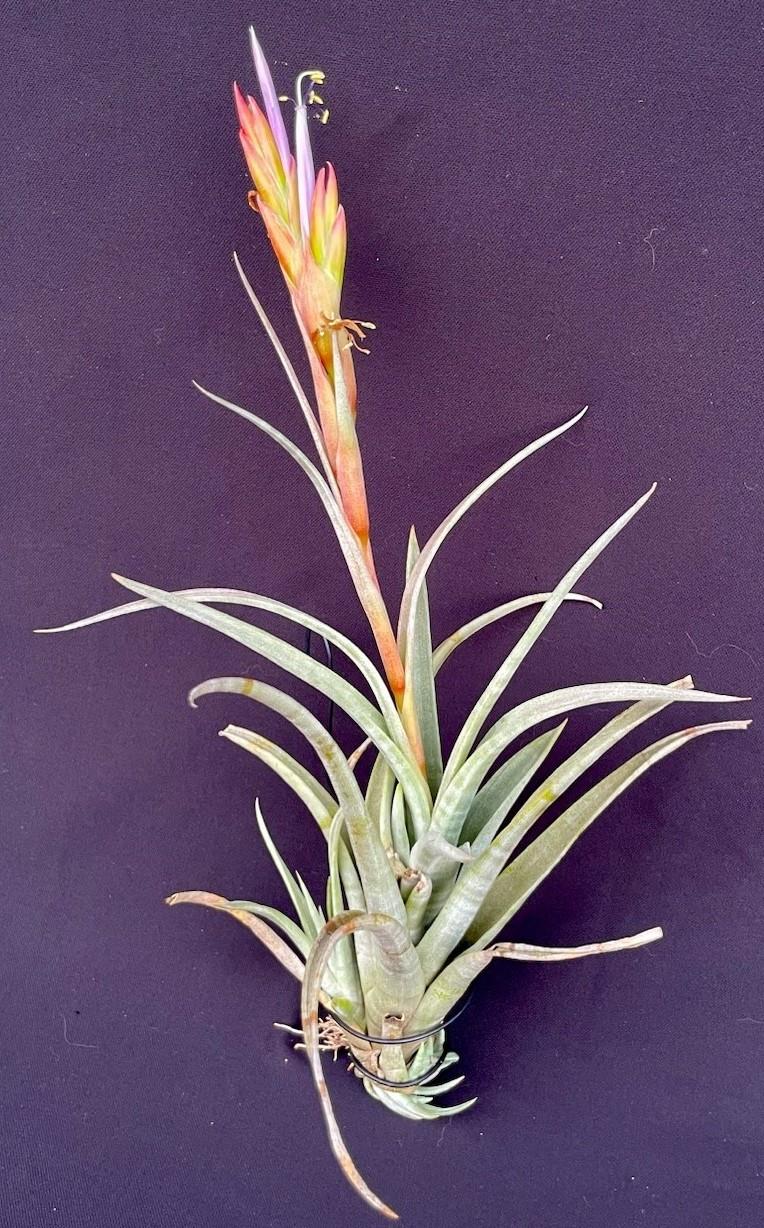
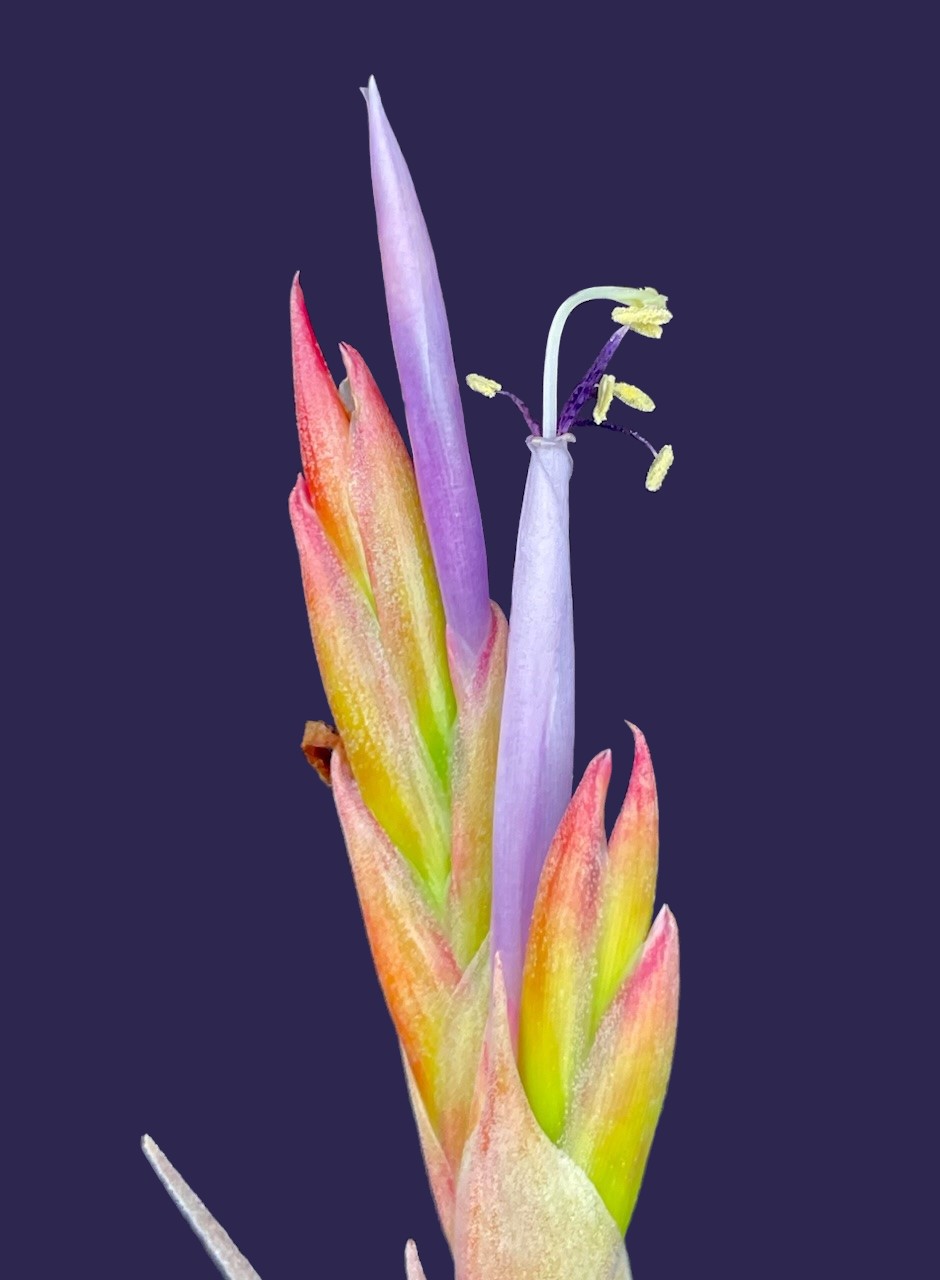
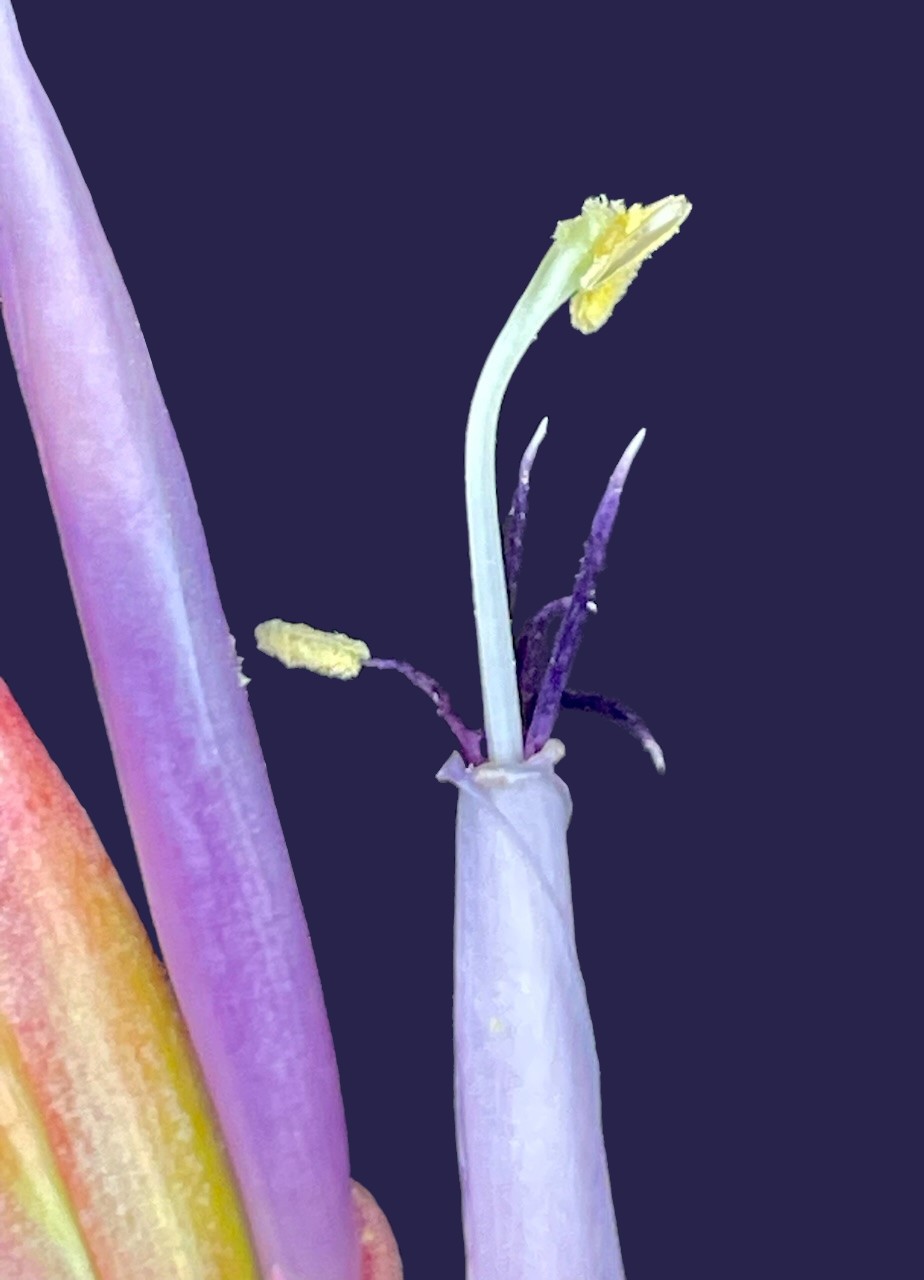
Tillandsia capistranoensis Ehlers & Weber Sp. nova Die Bromelie 1: 12-13. 1992
A Tillandsia mazatlanensis RAUH, cui affinis, characteribus sequentibus differt: planta saxicola nec epiphytica, folia subsucculenta, cano-alba, spicae latiores, longius stipitatae, bracteae florigerae viridoflavae, percarinatae, sepala longiora, sublibera, petala malvacea nec violacea; a Tillandsia durangensis RAUH et R. EHLERS in Rauh spicis longius stipitatis, bracteis florigeris densioribus rhachidem celantibus, percarinatis, viridoflavis, sepalis aequantibus vel brevioribus, sepalis coriaceis, longioribus et subliberis et petalis malvaceis nec violaceis recedit.
Typus: Mexico, Estdo. Zacatecas in via de San Juan Capistrano a Jesus Maria, 2000 m s. m., Martio 1985, leg. R. & K. D. Ehlers EM 850601 (Holotypus: WU).
Plant growing on rocks, making a large clump, stemless, flowering to 80cm high.
Leaves few to numerous (8 15), stiff and plump, erect, slender, making a rosette 50cm high, 30cm wide, the lower leaves with short, triangular, almost missing blade.
Leaf sheath unclear, longish oval, to 9cm long, to 5cm wide, inside dark brown, dense brown appressed scales, outside grey or brownish, with grey appressed scales, nerved.
Leaf blade triangular lancelike, to 40cm long, next the sheath 3.5cm wide, in one long erect or a little bent back tapering tip, the edges strongly bent inwards, both sides dense grey appressed scales.
Scape erect, to 30cm long, 7mm diam., yellow green, naked, wholly covered by subfoliate dense imbricate scape bracts, and not visible, internodes 3 5cm
Scape bracts dense, whitish grey, scaled on both sides, blades narrow triangular, mostly erect or spreading.
Inflorescence erect, exceeding the leaves, bipinnate, with 3 9 erect to bent spreading compound spikes, 25cm long, 7cm wide.
Spikes stem 1 1.5cm, to 16cm long, 1.5cm wide, narrow lancelike, complanate, with up to 16 sessile to 6cm long compound flowers, the lower ones sterile, the flat, 4 angled, shiny green, bent rhachis is not visible at flowering, but is after flowering.
Primary bract broad oval, with short tip, Ό - 1/5 as long as the spike.
Floral bract distichous, elliptic with short hooked tip, to 2.4cm long, 1.1cm wide, as long as the sepals, or 1mm shorter, keeled, hard, the edges thin, outside shiny yellow, the tip with weakly scattered scales, inside naked and strongly nerved.
Sepals lancelike, acuminate, to 2.5cm long, and 6mm wide, hard with transparent edges, yellow, becoming green at the base, inside and outside naked, shiny, nerved, sub-free (joined for 1mm), the posterior ones keeled.
Petals making an erect tube, 3.5cm long, 8mm wide, narrow at the base (to 3mm), tongue-shaped, the tip blunt, with a little portion sharply bent outwards, the bottom 1 cm white, then mauve, becoming lighter at the tip.
Stamens exceed the flower, Style 5.5cm long, exceeds the flower tube by up to 1.7cm, greenish white, thin.
Stigma very small (0.6mm), erect lobes, light green, Filament shorter than the style, arranged in 3 unequal lengths, 5cm long, the upper section oval in cross section, and light lilac, then it strongly narrows, becoming ribbonlike, twisted and entwined, white.
Anther 3 5mm long, 1mm wide, joined between 1/3 to ½ from the base, brown, Pollen yellow.
Ovary egg-shaped, 5 7mm high, 2mm wide, conical, green.
Habitat Mexico, State of Zacatecas, on the road between San Juan Capistrano and Jesus Maria, 2000m.
The plant grows at the type locality epilithically on low rocks in large groups together with a green Mammilaria with long brown or black thorns. On nearby bushes there is a very large form of T. atroviridipetala with small appressed scales.
Habitat and range: Outside the type locality a plant was found by Alfred Lau, in Cordoba, near Angustilla in the neighbourhood of Huazamote (border between Durango and Nayarit).
The plant belongs to the complex around T. polystachia Linnaeus, and also T. mazatlanensis Rauh and T. durangensis Rauh & R. Ehlers.
Differs from T. mazatlanensis in
1. Plant saxicolous not epiphytic.
2. Leaves sub-succulent, greyish white.
3. Spikes wider and longer, stemmed.
4. Flower bracts yellow and keeled.
5. Sepals longer and sub-free.
6. Petals mauve not violet.
Differs from T. durangensis in
1. Spikes longer stemmed
2. Flower bracts more dense, covering the rhachis (not visible) at flowering, strongly keeled, yellow (instead of carmine red) or green, as long as the sepal or shorter.
3. Sepals hard leathery, longer and sub-free.
4. Petals mauve, not violet.
Updated 25/01/24














